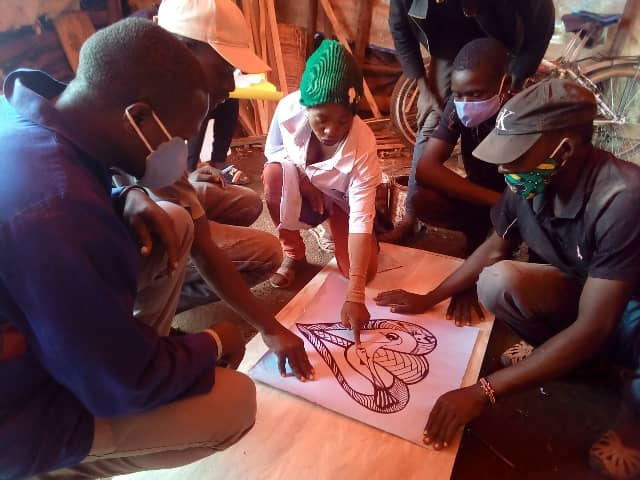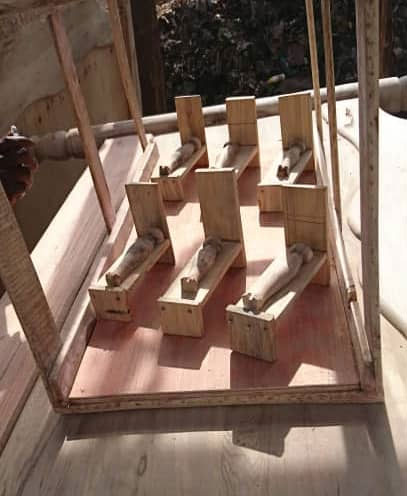
Functional artworks break the cultural barriers and stigma surrounding HIV/ Aids awareness
ARTS | Dominic Muwanguzi | HIV/ Aids is stills a major threat to the life and livelihood of young people in Uganda. This in spite of the numerous interventions by government and foreign stakeholders to create awareness among young people on the prevention of the pandemic through different platforms, particularly the mass media and workshops.
While research shows that the youth have embraced the awareness and prevention campaigns, statistics continue to show the young people are one of the most vulnerable groups in acquiring the pandemic. Studies from UNAIDS and Uganda Aids Commission alongside TASO- a local non-government institution at the forefront of the fight against AIDS- highlights this contradiction.
Such disparity illustrates that there are gaps in the scientific awareness campaigns, specifically at the grass-root level where the youth largely inhabit in informal spaces.
The youth are largely to be found living and working in poor suburbs of Katwe, Kalerwe, Nassana, Nakulabye and Ndeeba.
Such generally informal communities with typically informally trained young people require a medium that can break the barriers found in their everyday living. Incidentally such barriers including cultural and social stigma perpetuate Aids infection among the population.
In order to curb further spread of the disease and influence the much needed holistic approach to Aids infection, especially among young people, it is critical to employ collaborative and inclusive platforms in the fight.
Visual arts, possess the potential to engage the youth on the disease through its inclusive and informal nature.
Art can be effective in breaking taboos
Research has in the past demonstrated that art can be effective in breaking down taboos, enabling dialogue about sexuality and challenging HIV/AIDS stigma, with potential to change sexual behaviour among communities.

Based on such facts, meaningful relationships are established among the different youth from different cultural, gender and social backgrounds. Consequently, this inspires comprehensive and genuine conversations on the disease, within the context of young people.
Such adoption of visual arts is much evident in the recent researched based production of artworks by student-artist, Robert Ssewanyana.
The post-graduate student at Durham University, UK- specializing in the use of applied sculpture in prevention and empowerment of HIV/ AIDs among young people ( Phd thesis)- creates functional objects in open spaces to open up conversations on Aids infection and prevention.
Applied sculpture literally means the production of functional artworks or familiar objects for the local community. Hence, through the production of these everyday objects that are created from ordinary materials like wood and metal accessed from the local community, opportunities for diverse conversations on HIV/ Aids are provided.
The spaces in which these artwork are created are Ndeeba, Katwe and Bwaise.
Typical of these artworks are benches, beds and artistically designed bicycles constructed with spikes to evoke the Covid- 19 pandemic that convey the message of effective awareness on Aids prevention and infection among young people.
More so, the technique of working collaboratively to produce the artworks is essential in constructively engaging youth and therefore skilling them in the long-run. In the same vain, the artwork bare testimony to the personal experience with the disease like is revealed by the youth in the production process of the art.

For example, the figurines of miniature dead people lying on the bed were created from a personal experience by one of the youth who had to treat an HIV/Aids relative in one of the health facilities in western Uganda.
That experience of routinely seeing dead bodies traumatized them and they found solace in sharing it during the meetings that led to the production of the actual artwork.
Similarly, the bicycle artworks with spikes, expose the challenges HIV/ Aids patients had to go through during the total lockdown. Many patients, opted to use bicycles as a medium of transport to journey from their respective homes- often travelling for several miles- to the hospital to acquire the much needed drugs for their treatment.
Conversely, the work inspires conversations on challenges encountered by young women who work in masculine spaces like metal welding and timber workshops hence, the choice of locations like Katwe and Ndeeba that are largely known for these respective trades.
The process of production of familiar objects with the local community not only provokes the much desired candid conversation on HIV/ Aids, but also taps into the critical issue of skills development for the youth.
This component is essential since it equips the youth with necessary technical skills that they can use to create income for themselves. With economic empowerment, sexual exploitation and idleness are curbed consequently leading to low infection rate.
The post Adoption of Visual Arts in the fight against HIV and Aids appeared first on The Independent Uganda:.
from The Independent Uganda: https://ift.tt/39BL866
0 Comments